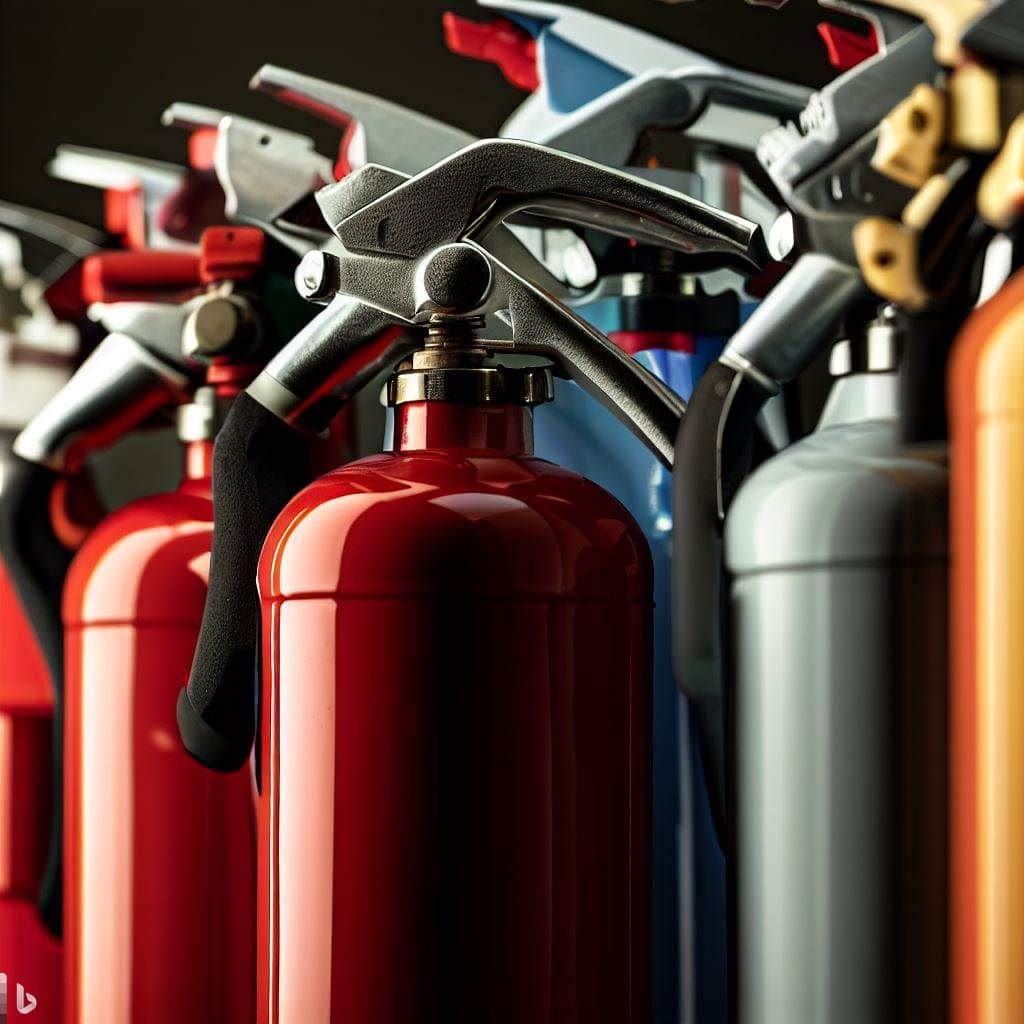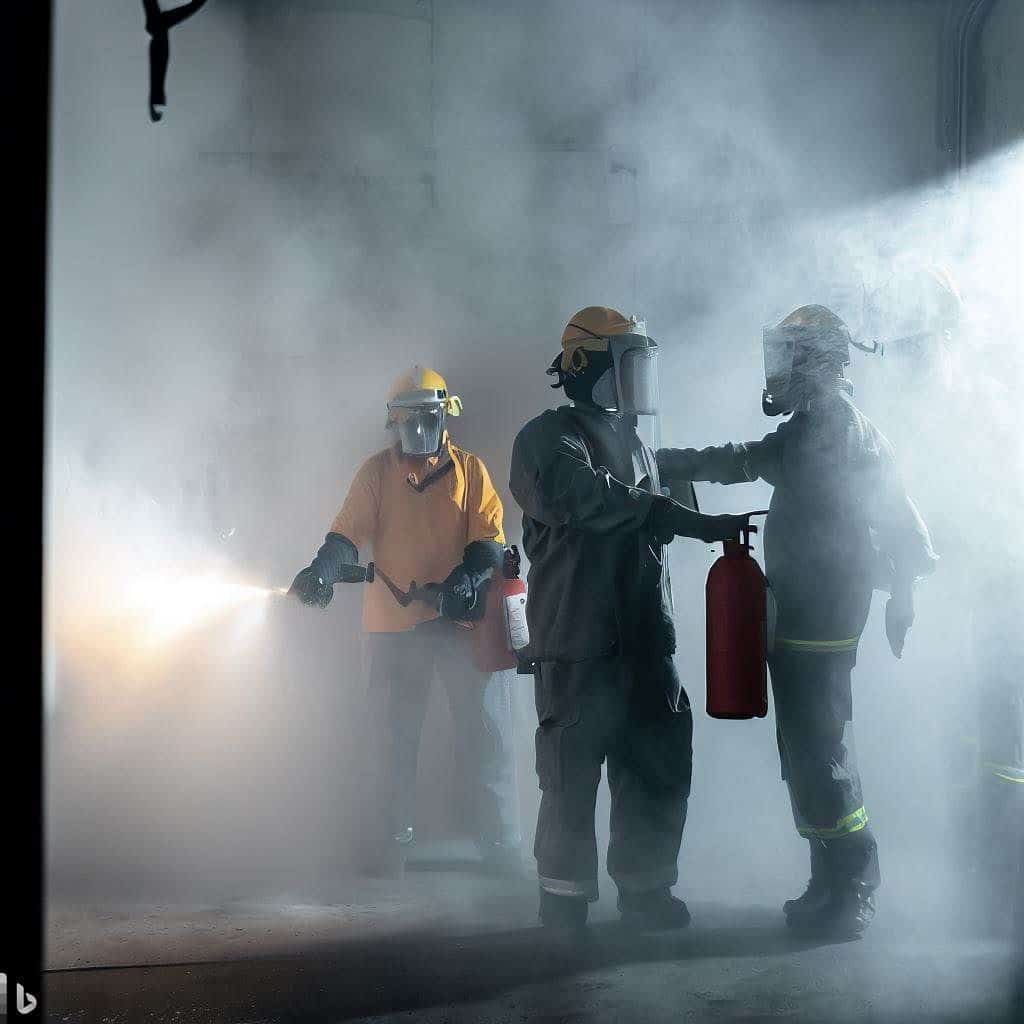Safety First: What Fire Extinguisher Should Be Used in Confined Spaces?
Fire safety is critical for everyone at home, at work, or in public spaces. It is a set of practices intended to reduce the destruction caused by fire and includes measures to prevent the ignition of an uncontrolled fire and those used to limit the development and effects of a fire after it starts.
Knowing and implementing fire safety can mean distinguishing between minor and catastrophic incidents. It begins with understating the basics: the nature of fire, how it spreads, and the right equipment and techniques to control and extinguish it. A key element in this is the fire extinguisher, a device filled with fire-fighting substances designed to extinguish fires by depriving them of oxygen.
In understanding fire safety, it’s crucial to recognize the different environments where fires can occur. One such environment is a confined space, which presents unique challenges and risks. These spaces are not designed for continuous occupancy and are hard to exit in the event of a fire, making fire safety paramount.
The Importance of Fire Extinguishers in Confined Spaces
Confined spaces pose unique fire safety risks. They are often enclosed or partially enclosed areas not necessarily designed for people but large enough for workers to enter and perform certain jobs. These areas have limited or restricted means of entry or exit and are not designed for continuous occupancy.
Fire in a confined space is particularly dangerous because of the potential for the rapid spread of heat and smoke, limited escape routes, and difficulty for emergency services to access the area. In these situations, a fire extinguisher is a life-saving device. It can suppress a fire before it grows uncontrollably, giving people enough time to escape and preventing further damage.
Choosing the right fire extinguisher for confined spaces is crucial. The wrong fire extinguisher can not only fail to put out the fire but may even worsen the situation. This brings us to the question: what fire extinguisher should be used in confined spaces?

Different Types of Fire Extinguishers
Fire extinguishers come in different types, each designed to put out specific types of fires. Understanding these types is important to ensure the correct fire extinguisher is used in a particular situation.
The most common types include water extinguishers, which are ideal for fires involving organic materials like paper, wood, and textiles; foam extinguishers, which are suitable for fires involving flammable liquids; dry powder extinguishers, which can be used on flammable gases; carbon dioxide extinguishers, which are effective against electrical fires; and wet chemical extinguishers, which are specifically designed for fires involving cooking oils and fats.
Each type of fire extinguisher has its color code and uses a different extinguishing medium. The choice of a fire extinguisher depends on the nature and scale of the fire and the environment in which it occurs.
What Fire Extinguisher Should Be Used in Confined Spaces?
Choosing the right fire extinguisher for confined spaces depends on the nature of the space and the materials present. Generally, dry powder extinguishers are recommended for confined spaces. They are versatile and can extinguish Class A, B, and C fires involving ordinary combustibles, flammable liquids, and electrical equipment, respectively. This makes them suitable for many confined spaces, from utility tunnels to storage tanks.
However, it’s important to note that dry powder extinguishers can reduce visibility and may cause breathing problems. Therefore, they should be used with caution. If the confined space contains specific materials, a different type of fire extinguisher may be required. For instance, a carbon dioxide extinguisher may be more suitable if the space contains a large amount of electrical equipment.
Ultimately, the question of what fire extinguishers should be used in confined spaces is best answered by a fire safety professional who can assess the specific risks and requirements of the space.
How to Use a Fire Extinguisher in Confined Spaces
Using a fire extinguisher in a confined space requires careful consideration. The first step is to identify the type of fire. This will inform the type of fire extinguisher to use. Next, the user should follow the PASS method: Pull the pin to break the tamper seal, Aim low at the base of the fire, Squeeze the handle to release the extinguishing agent, and Sweep from side to side until the fire is completely out.
While doing this, the user should also ensure a clear escape route. In confined spaces, the risk of smoke and heat buildup is high, and conditions can change rapidly. It’s important always to prioritize personal safety and evacuate if the fire cannot be controlled or the conditions deteriorate.
Safety Precautions When Using Fire Extinguishers in Confined Spaces
Safety should always be the first consideration when using a fire extinguisher in confined spaces. One key precaution is ensuring the fire does not trap the user. They should have a clear escape route and not attempt to fight the fire if it blocks the exit.
The user should also avoid inhaling the extinguishing agent, especially from dry powder extinguishers. This can cause respiratory problems. If visibility is reduced due to the extinguishing agent, the user should leave the space immediately.
Another important precaution is to ensure that the fire is completely extinguished. Partially extinguished fires can reignite, especially in confined spaces where the heat can build up.
Maintenance and Inspection of Fire Extinguishers in Confined Spaces
Maintenance and inspection of fire extinguishers in confined spaces are crucial in ensuring that they function correctly when needed. Regular inspections should confirm that the extinguisher is in the right place, unobstructed, and not damaged.
Maintenance involves checking the pressure gauge, ensuring the pin and tamper seal is intact, checking for any visible damage, leakage, or corrosion, and checking the manufacturing date and the service record. It’s recommended that fire extinguishers be serviced by a professional at least once a year. In confined spaces, it’s also important to check the accessibility of the fire extinguisher. It should be easily reachable in case of a fire.
Training for Using Fire Extinguishers in Confined Spaces
Using a fire extinguisher effectively requires training. This is especially true for confined spaces, where the risks are higher and the situation can be more complex. Training should cover the basics of fire safety, the different types of fire extinguishers and their uses, how to operate a fire extinguisher, and the safety precautions to take.
It’s also important to include practical exercises that allow participants to gain hands-on experience in a controlled environment. Training should also be specific to the confined space. It should cover the specific risks and safety procedures for that space and how to evacuate in case of a fire.

Fire Safety Regulations and Standards for Confined Spaces
There are several fire safety regulations and standards for confined spaces. These are designed to protect people and property and ensure appropriate fire safety measures are in place.
These regulations and standards cover a range of issues, from the design and construction of the confined space to fire safety equipment and procedures. They also cover training and emergency response. Compliance with these regulations and standards is not just a legal requirement; it’s also a crucial part of ensuring fire safety.
Conclusion: Prioritize Safety, Be Prepared
In conclusion, fire safety in confined spaces is a complex issue that requires careful consideration. The question of what fire extinguishers should be used in confined spaces depends on the nature of the space and the materials present.
However, choosing the right fire extinguisher is just one part of the equation. Equally important are regular maintenance and inspection, proper training, and adherence to fire safety regulations and standards. Fire safety is not a matter of chance. It’s a matter of planning and preparation. By prioritizing safety and being prepared, we can protect ourselves and others from the devastating effects of fire.
Frequently Asked Questions:
Q: Why is fire safety important in confined spaces?
A: Confined spaces pose unique fire safety risks due to their enclosed nature, limited escape routes, and potential for rapid heat and smoke spread. Fire safety measures, including fire extinguishers, can prevent a minor incident from becoming a major disaster.
Q: How often should fire extinguishers in confined spaces be inspected?
A: Fire extinguishers should be visually inspected monthly to ensure they are in the right place, unobstructed, and not damaged. They should also be serviced by professionals at least once a year.
Q: Can I use any fire extinguisher in a confined space?
A: No. The type of fire extinguisher used in a confined space should be appropriate for the potential fires that could occur in that space. The wrong type of fire extinguisher can fail to put out the fire or even worsen the situation.
Q: How can I learn to use a fire extinguisher in a confined space?
A: Training is crucial for effectively using a fire extinguisher. Look for training programs covering fire safety basics, practical exercises, and specific information about the confined space.
